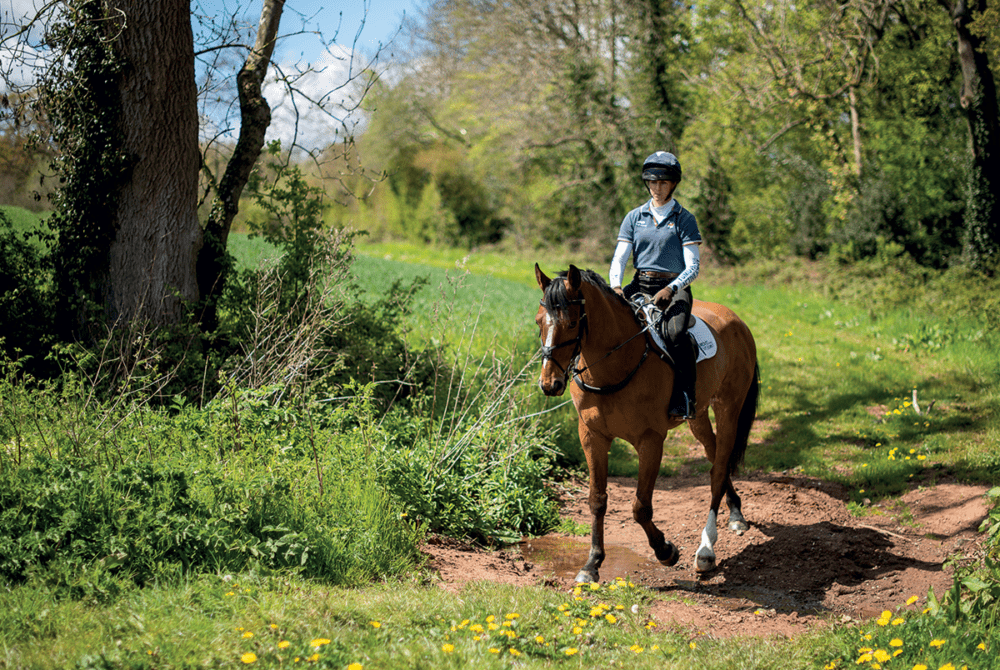Discover the benefits of hacking with Lydia Hannon
Posted 30th November 2021
Variety in your horse’s work is key to getting the best from him mentally and physically. Lydia Hannon explains what you can achieve out hacking

Core strength is essential for balance and control in horses, just as it is in humans. However, always working your horse on a beautifully level arena – no matter how high quality your schooling or how innovative your exercises – isn’t enough to develop a really robust physique that’s essential for getting the best from your horse.
Going up!
To do that you need to step outside the arena and be adventurous – make use of the terrain available to you, and in ways you might not have thought to before. For example, cantering up a hill is great from a fitness perspective, but tackling the same slope in walk can reap the benefits in terms of building strength through your horse’s quarters and core.
Trotting uphill also has a similar effect, but it’s important to keep the tempo slow. This will make sure that he has to push with his hindlegs rather than pulling with his front end.
By keeping it simple and using your surroundings, you can enhance your horse’s development without even so much as trotting a circle. That’s not to say that schooling or jumping in an arena doesn’t still have its place in your training programme, but more that you can use hacking and hillwork to build power, all while keeping his – and your – brain happy.
Jump what’s in front of you
If you can get off-road, popping what’s in front of you is superb preparation for cross-country.
For instance, small drainage ditches are really useful obstacles for training towards jumping ditches in competition. The ‘D’ word can be a bit of a taboo for lots of riders, mainly because they just don’t see them often enough. By normalising ditches and exposing yourself and your horse to them regularly you can dispel the spookiness and build his confidence.
To introduce jumping ditches, start by asking your horse to walk over it, following another horse if he isn’t sure to begin with. From there, build up to trotting and cantering on the approach until he’s happily popping over the ditch.
Similarly, logs and fallen branches make great natural fences to jump out hacking. Check out the take-off and landing for safety first, and then aim to jump out of a rhythm, just as you would if you were riding cross-country.
There no hard and fast rules to training your horse like this. So long as you’re safe, be creative and make good use of what is around you.
Top Tip
Don’t feel like you have to hack for hours on end to achieve results. Take your time when building up his strength and fitness – rushing to get him fit will only make injury more likely.
And relax…
One of the most important and beneficial parts of doing more work outside of the school with your horse is the effect it has on his mental wellbeing, and yours, too, for that matter. Even if he can be spooky to hack, there are few horses that will continue to be so when re-exposed to stimuli over and over.
Even sharp horses will normally let go if hacked often enough and in the right way. This is where walking and slow trotting up hill is a great way of getting him to settle, whereas cantering up the same terrain may only serve to whizz him up. It’s important to remember that you can still ask him to work hard and push his body while taking his time and learning to relax.
Pick up your copy of January Horse&Rider on sale 2 December 2021, and find out everything else you need to know for introducing a variety to your horse’s routine











